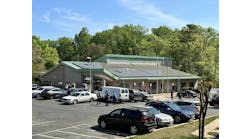Solar took off once the industry started to use power purchase agreements and leasing. What’s the equivalent for microgrid financing?
‘Warehouse credit’ might be the answer for microgrids, energy storage and other resiliency projects, according to a new report by the Clean Energy Group, “Ramp Up Resilient Power Finance.”
Widely used in mortgage lending, warehouse credit rolls up short-term loan transactions into securities that can be sold to investors.
Because the microgrid industry is so young, new projects tend to be financed and built in a plodding one-off way, often centered around government funding. In fact, $500 million in state and federal money has been positioned to finance resilient power projects in the Northeast, according to the report.
“What is missing is an integrated finance approach for resilient power projects that structures grants and credit enhancement to support the financing of a pipeline of projects,” said the report.
Warehouse credit could create a way to finance many microgrids so that they are built in aggregate across communities.
Warehousing already is being used for some clean energy projects — both large and small — in Green Jobs-Green New York, Connecticut Green Bank’s C-PACE and Pennsylvania’s Warehouse for Energy Efficiency Loans.
Government sponsored financing, like green banks, can play a role in this type of financing, as can national and regional community development financial institutions (CDFIs), the report said.
“Fortunately, new institutions do not need to be created for these financing purposes,” the report said. “The necessary institutions already exist that can play the roles required for an integrated financing strategy for resilient power.”
Instead, the challenge is to identify sufficient demand for financing “to justify creating what may well be a $25-50 million warehouse facility,” said the report.
Some large resiliency projects are in play, such as New Jersey’s upgrade of waste water treatment facilities following massive flooding from SuperStorm Sandy, and Green Mountain Power’s development of the Stafford Hills Solar + Storage Microgrid Project in Rutland, Vermont.
CEG plans to bring together interested stakeholders to explore the design of a resilient power financing program. The report raises several questions to consider:
- Can we develop a more robust financing strategy to aggregate resilient power projects to get to scale?
- Can the existing green banks or similar financing entities in states work toward together to create a warehouse credit facility to aggregate pipelines of resilient power financings?
- Can a warehouse credit facility be used to provide liquidity for both large resilient power projects (waste water treatment facilities, utility-owned microgrids) and for smaller community resilient power facilities (multifamily affordable housing and assisted living facilities, emergency shelters, police and fire services, dialysis and community health centers, publicly-owned buildings)?
- What market segments of resilient power projects are likely to yield sufficient pipelines of projects to result in a marketable security? Is there an opportunity to roll up similarly structured transactions from multiple jurisdictions and across state lines to increase the size of the ultimate security?
The full report is available from CEG.
Have some ideas on microgrid financing? Join thought leaders in discussion on our LinkedIn group, Microgrid Knowledge.






